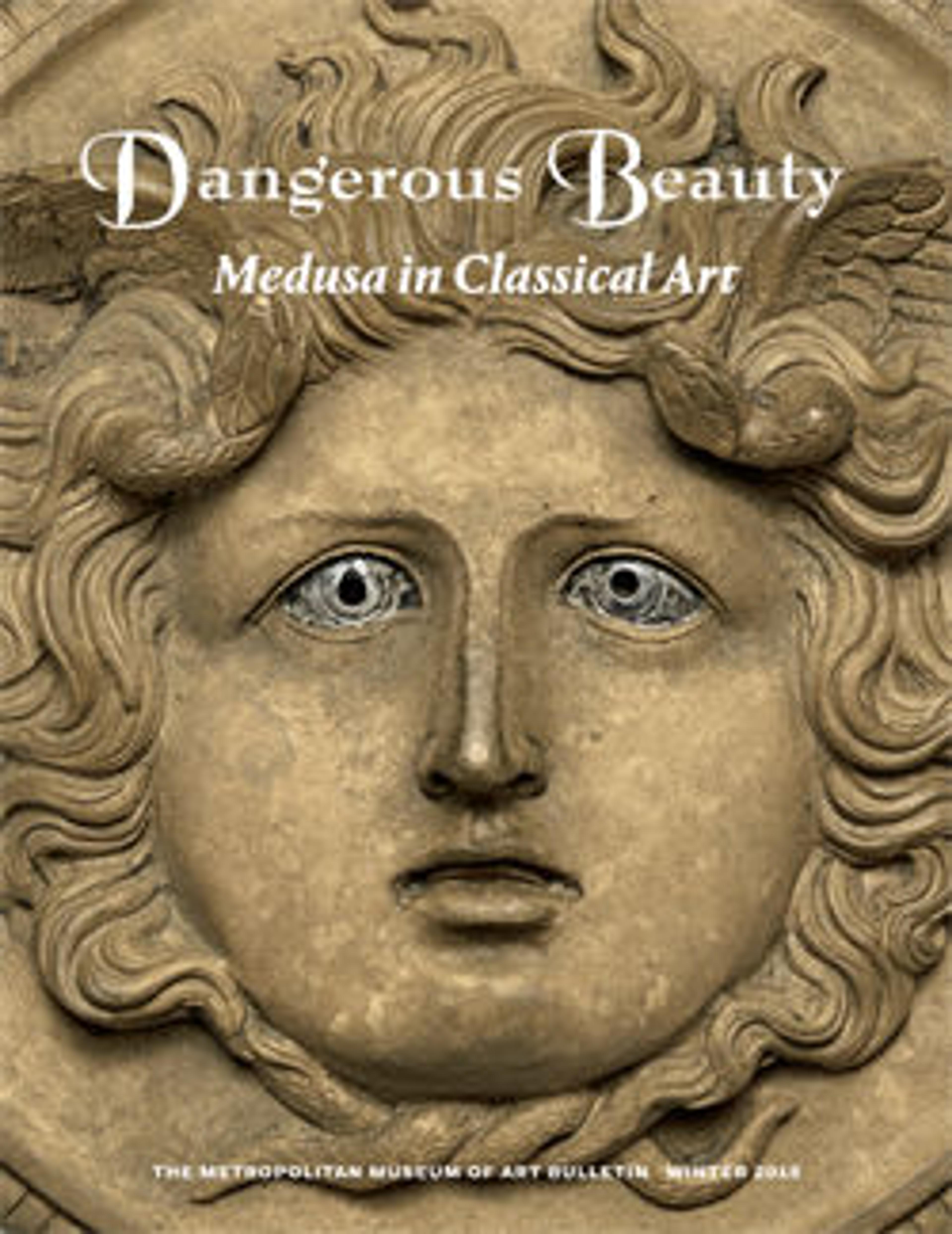Terracotta lekythos (oil flask)
Perseus flying away with the head of Medusa, while Pegasos springs from her severed neck
Perseus, son of the god Zeus and the human princess, Danae, was given the task of beheading Medusa, one of the three Gorgons, whose faces were so horrible that seeing them turned men to stone. With the help of a magic cap and winged shoes given to him by Athena, Perseus became invisible and flew to the place where the three sisters were asleep. There he cut off Medusa's head. On this vase, Perseus flees with the head in a sack as the immortal winged horse Pegasos springs from the body of the dead Gorgon. Perseus and the horse are shown in the traditional black-figure manner, while the Gorgon is drawn in outline, probably influenced by the newly developed red-figure technique.
Perseus, son of the god Zeus and the human princess, Danae, was given the task of beheading Medusa, one of the three Gorgons, whose faces were so horrible that seeing them turned men to stone. With the help of a magic cap and winged shoes given to him by Athena, Perseus became invisible and flew to the place where the three sisters were asleep. There he cut off Medusa's head. On this vase, Perseus flees with the head in a sack as the immortal winged horse Pegasos springs from the body of the dead Gorgon. Perseus and the horse are shown in the traditional black-figure manner, while the Gorgon is drawn in outline, probably influenced by the newly developed red-figure technique.
Artwork Details
- Title:Terracotta lekythos (oil flask)
- Artist:Attributed to the Diosphos Painter
- Period:Archaic
- Date:ca. 500 BCE
- Culture:Greek, Attic
- Medium:Terracotta; black-figure, white-ground
- Dimensions:9 5/8in. (24.5cm)
- Classification:Vases
- Credit Line:Rogers Fund, 1906
- Object Number:06.1070
- Curatorial Department: Greek and Roman Art
More Artwork
Research Resources
The Met provides unparalleled resources for research and welcomes an international community of students and scholars. The Met's Open Access API is where creators and researchers can connect to the The Met collection. Open Access data and public domain images are available for unrestricted commercial and noncommercial use without permission or fee.
To request images under copyright and other restrictions, please use this Image Request form.
Feedback
We continue to research and examine historical and cultural context for objects in The Met collection. If you have comments or questions about this object record, please contact us using the form below. The Museum looks forward to receiving your comments.
